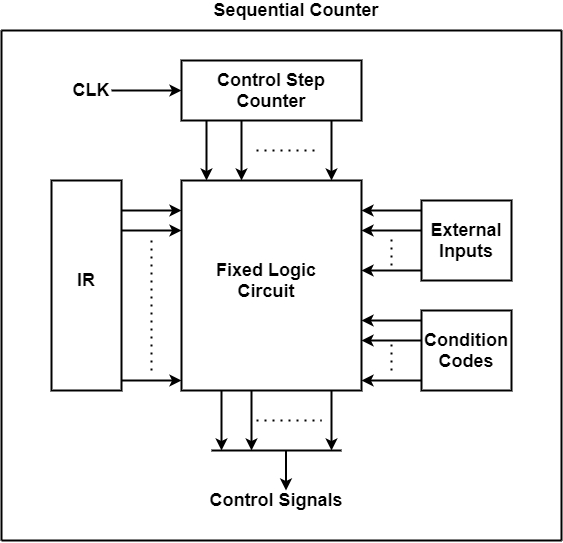
 Data Structure
Data Structure Networking
Networking RDBMS
RDBMS Operating System
Operating System Java
Java MS Excel
MS Excel iOS
iOS HTML
HTML CSS
CSS Android
Android Python
Python C Programming
C Programming C++
C++ C#
C# MongoDB
MongoDB MySQL
MySQL Javascript
Javascript PHP
PHP
- Selected Reading
- UPSC IAS Exams Notes
- Developer's Best Practices
- Questions and Answers
- Effective Resume Writing
- HR Interview Questions
- Computer Glossary
- Who is Who
What is Hardwired Control Unit?
A hardwired control is a mechanism of producing control signals using Finite State Machines (FSM) appropriately. It is designed as a sequential logic circuit. The final circuit is constructed by physically connecting the components such as gates, flip flops, and drums. Hence, it is named a hardwired controller.
The figure shows a 2-bit sequence counter, which is used to develop control signals. The output obtained from these signals is decoded to generate the required signals in sequential order.

The hardwired control consists of a combinational circuit that outputs desired controls for decoding and encoding functions. The instruction that is loaded in the IR is decoded by the instruction decoder. If the IR is an 8-bit register, then the instruction decoder generates 28 (256) lines.
Inputs to the encoder are given from the instruction step decoder, external inputs, and condition codes. All these inputs are used and individual control signals are generated. The end signal is generated after all the instructions get executed. Furthermore, it results in the resetting of the control step counter, making it ready to generate the control step for the next instruction.
The major goal of implementing the hardwired control is to minimize the cost of the circuit and to achieve greater efficiency in the operation speed. Some of the methods that have come up for designing the hardwired control logic are as follows −
- Sequence Counter Method − This is the most convenient method employed to design the controller of moderate complexity.
- Delay Element Method − This method is dependent on the use of clocked delay elements for generating the sequence of control signals.
- State Table Method − This method involves the traditional algorithmic approach to design the Notes controller using the classical state table method.

